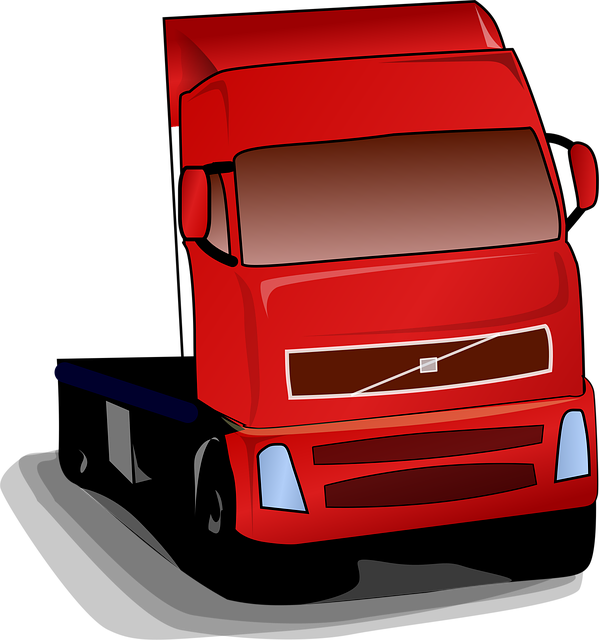Looking to register your car in California? Our step-by-step guide simplifies the process. First, grasp the fundamentals of California’s car registration with an emphasis on VIN (Vehicle Identification Number) verification—a crucial initial step. Next, assemble required documents for this critical check. Learn how to perform a VIN inspection and select the best DMV service option for you. Finally, master the process of completing registration and securing your license plate. Master these steps for a smooth California car registration experience.
- Understanding the California Car Registration Process
- Gather Required Documents for VIN Verification
- Perform Vehicle Identification Number (VIN) Check
- Choose a California Department of Motor Vehicles (DMV) Service Option
- Complete the Registration and Obtain Your License Plate
Understanding the California Car Registration Process

Understanding the California Car Registration Process
Registering a car in California involves several steps that can seem daunting, but with proper preparation and knowledge, the process becomes more manageable. The first crucial step is to ensure your vehicle meets all state requirements for safety and emissions standards. This often involves passing a California smog test or emissions inspection, which verifies that your car’s exhaust system operates efficiently and within safe pollution levels.
Once your vehicle has passed the necessary inspections, including a VIN (Vehicle Identification Number) verification, you can proceed to gather essential documents such as proof of ownership, insurance, and identification. The next step is to visit a California Department of Motor Vehicles (DMV) office or use their online services to complete the registration application. This includes providing your vehicle’s information, filling out necessary forms, and paying the required fees. A successful VIN inspection, often conducted by authorized agents, ensures the accuracy of your car’s identification, which is a critical component in the registration process.
Gather Required Documents for VIN Verification

Before you can register your car in California, you’ll need to gather several key documents for a crucial step known as VIN verification. This process involves confirming your vehicle’s unique Vehicle Identification Number (VIN) and its authenticity. To start, obtain your vehicle’s registration certificate from the previous state or country of ownership—this is essential for proving your car’s history. Additionally, you’ll need to present a valid driver’s license or identification card in your name.
For a seamless VIN verification process, consider using a mobile vin verifier service. These services offer convenient and efficient vin inspection options, allowing you to complete this requirement without visiting a traditional DMV location. By having all your necessary documents prepared, including the vehicle’s title and any proof of insurance, you’ll be well on your way to registering your car in California smoothly and without delay.
Perform Vehicle Identification Number (VIN) Check

Before registering your car in California, it’s crucial to perform a Vehicle Identification Number (VIN) check. This step is vital as it ensures that the vehicle’s details match the information provided by the manufacturer. A mobile VIN inspection or verification service can be incredibly handy for this process. Many companies now offer these services, allowing you to get a comprehensive vin verification done right at your location, whether you’re at home or work.
By utilizing a mobile vin verifier, you simplify the task of cross-referencing the vehicle’s identification number with state records. This not only saves time but also increases accuracy. The process typically involves scanning the VIN and accessing real-time data from various databases to confirm the car’s history, including any previous owners, maintenance records, and potential recalls.
Choose a California Department of Motor Vehicles (DMV) Service Option

When it comes to registering your car in California, the first step is to select a suitable service option from the California Department of Motor Vehicles (DMV). The DMV offers several ways to streamline the registration process, catering to different needs and preferences. For instance, you can visit a local DMV field office, which is ideal for those who prefer face-to-face interactions and need immediate assistance. Alternatively, the DMV provides an online registration system, allowing you to complete the process from the comfort of your home.
One critical aspect to consider during registration is the Vehicle Identification Number (VIN) verification. This step ensures that your vehicle’s details match the information in the DMV’s database. While you can conduct a VIN inspection at a field office, many opt for convenient mobile VIN verification services, especially when dealing with out-of-state purchases or used cars. These services send a professional to your location to perform the VIN check, making it a hassle-free and time-saving option.
Complete the Registration and Obtain Your License Plate

After submitting the required documents and fees, it’s time to complete the registration process. This involves obtaining your vehicle’s license plate, which is a crucial step in legally operating your car on California roads. Once your application is approved, you’ll receive your license plate along with registration materials detailing your vehicle’s specific requirements and regulations.
For added convenience, many Californians opt for a mobile vin inspection or mobile vin verification service. These services send a professional to your location to perform the vin verification process, ensuring a swift and hassle-free experience. This is particularly beneficial if you have difficulty visiting a DMV office or prefer the flexibility of having the service come to you.
Registering a car in California involves several steps, from gathering essential documents to completing the VIN verification process. By understanding these requirements and choosing the right DMV service option, you can ensure a smooth registration experience. Remember to keep your vehicle’s registration up-to-date for legal compliance and safety purposes.



